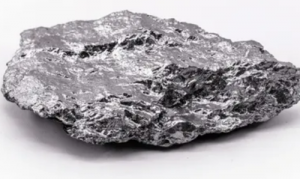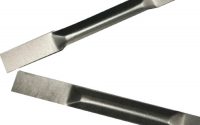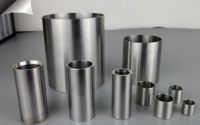Molybdenum’s Advancements in Aerospace Technology
Introduction
The aerospace industry relies on materials that withstand extreme conditions while ensuring safety and efficiency. In this pursuit, molybdenum emerges as a critical element. Its unique properties have revolutionized the construction of aircraft, propelled rocketry, and aerospace components.

Understanding Molybdenum
Molybdenum stands as a fascinating element renowned for its diverse properties and manifold applications across various industries. Its remarkable characteristics make it a crucial component in multiple fields, from metallurgy to technology.
- First, molybdenum boasts high tensile strength, so it can withstand extreme temperatures and pressures without losing structural integrity.
- Mo also stands out for superior heat resistance. It has a high melting point of approximately 2,623 degrees Celsius (4,753 degrees Fahrenheit).
- Third, Mo exhibits remarkable electrical and thermal conductivity.
- Its resistance to corrosion and oxidation further enhances its longevity and suitability in environments prone to chemical exposure or harsh conditions.
Molybdenum Aerospace Applications
Molybdenum’s strength, heat resistance, and conductivity continue to drive innovations. These features also pave the way for new possibilities in the aerospace industry. Here are some of the key applications:
1. High-Temperature Structural Components:
Molybdenum is able to withstand extreme temperatures. So, it is ideal for crafting structural components in aerospace machinery, such as aircraft engines and rocket propulsion systems. Its high melting point and strength under heat contribute to the durability and reliability of these critical parts.
2. Heat Shields and Thermal Insulation:
In spacecraft and aerospace vehicles, molybdenum is used in heat shields and thermal insulation materials. That’s because Mo has excellent thermal conductivity and resistance to thermal stress. These properties help protect spacecraft during atmospheric re-entry or exposure to intense heat.
3. Electrical Contacts and Wiring:
Mo’s high conductivity makes it valuable for electrical contacts and wiring systems in aerospace applications. Its ability to resist corrosion and withstand high temperatures ensures the efficiency and reliability of electrical systems.
4. Propulsion Systems:
Mo plays a role in various propulsion systems, particularly in the manufacturing of nozzles and combustion chambers. It possesses durability and resistance to degradation under extreme conditions. Therefore, it can hold to the efficiency and performance of propulsion systems in aerospace vehicles.
5. Alloying Agent in Superalloys:
Molybdenum alloys can be combined with other metals such as titanium or nickel. Such a combination creates superalloys used in turbine engines. These alloys offer increased strength, temperature resistance, and corrosion resistance, and enhance the overall performance and lifespan.
6. Coatings and Surface Treatments:
There are lots of molybdenum-based coatings in the aerospace industry. These uses improve the wear resistance, reduce friction, and enhance durability. Thus, critical parts are able to hold longevity and reliability when subjected to harsh environments.
Fueling Future Aerospace Innovations
Mo’s remarkable properties continue to inspire new frontiers in aerospace technology. Such uses include futuristic aircraft designs and spacecraft innovations. Mo’s contributions lay the groundwork for safer, more efficient, and more advanced aerospace solutions. Its versatility and reliability empower engineers and designers to push the boundaries of what’s possible in aviation and space exploration.
Conclusion
Molybdenum’s unique combination of strength, high-temperature resistance, and conductivity makes it crucible in various aerospace applications. Such uses range from structural components to electrical systems and propulsion. More importantly, its versatile properties contribute significantly to the performance, durability, and safety of aerospace machinery and vehicles.
Stanford Advanced Materials (SAM) stands as a reputable supplier of high-quality molybdenum and its alloys. We also cater to diverse industries’ needs. Send us an inquiry if you are interested. Hope that you can find reliable molybdenum materials for your research and business.
Reference:
[1] Molybdenum chemical element. (2023, October 31). In Britannica. https://www.britannica.com/science/molybdenum



